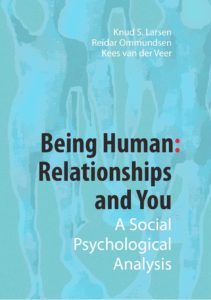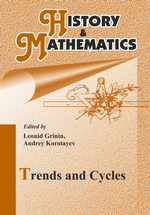ISSA Proceedings 2002 – The Relationships Among Logic, Dialectic And Rhetoric
 1. Introduction
1. Introduction
A consideration of the relationship among logic, dialectic and rhetoric was found already in the work of Plato and Aristotle and others in the first golden age of Western philosophy, and this relationship has received attention down through Western history (see the historical observations in Krabbe 2000, Hohmann 2000, and Leff 2000). The late 20th century argumentation scholarly community was reminded of its salience (see Wenzel, 1980) and has returned to its examination. In the last five years or so, a flurry of activity has raised the profile of these questions in this community, particularly with the focus on how dialectic and rhetoric and their relationships bear on the identification, interpretation and assessment of arguments and argumentation (see the special issues of Argumentation edited by Hansen and Tindale 1998, and by van Eemeren and Houtlosser 2000a).
In the English-speaking philosophical community, in contrast, there has been little attention to argumentation at all, to say nothing of the relations among logic, dialectic and rhetoric. (The work of Henry W. Johnstone, Jr. is a noteworthy exception.) However, in the last thirty years a small number of philosophers, some of whom characterize their field (for rhetorical reasons) as “informal logic,” have been working out the implications of expanding the analysis and assessment of arguments beyond the identification of the deductive or entailment relationships they might exhibit. In broadening the scope of their perspective in this way, they initially (and belatedly) recognized the bearing of dialectic (see, for instance, Blair and Johnson, 1987), and more recently, the importance of rhetoric (see, for instance, Tindale, 1999). In doing so, they raise for themselves the question of the relationship among the three.
So, under the influence of the recent attention to rhetoric and to the relation between dialectic and rhetoric by the broader community of argumentation, and also due to their own internal theoretical development, some philosophers working in informal logic have come to an interest in these issues. It is from this historical situation that my own interest in this topic arises. This paper is an attempt to come to grips with the relationship of these three fields or perspectives. To begin, I explain the senses of logic, dialectic and rhetoric used in the paper. If the paper has a thesis, part of it is that there is no one type of relationship among these three, but rather several – at least four, and there may be more. For each of these types of ways the three can be related, the question arises as to how they in fact are related. The other part of the paper’s thesis is that even for each type there is not always only one way the three are related. Read more
Being Human. Chapter 3: Attraction And Relationships: The Journey From Initial Attachments To Romantic Love
 Many years ago two boys were walking home from school. They were seven years old, lived in the same neighborhood, but went to different grade schools. Although living close to each other they had not met before running into each other on this day on the road leading up the hill to their neighborhood. Both seemed quite determined to assert themselves that day, and soon they began pushing each other that gradually turned to wrestling, and attempts to dominate. After what seemed hours, the two little boys were still rolling down the surrounding hills as the sun was going down. Neither succeeded in achieving victory that day. In fact, they never again exchanged blows but became the best of friends. Today it is more than 50 years later, and their friendship has endured time and distance. Friendship is like a rusty coin; all you need to do is polish it at times!
Many years ago two boys were walking home from school. They were seven years old, lived in the same neighborhood, but went to different grade schools. Although living close to each other they had not met before running into each other on this day on the road leading up the hill to their neighborhood. Both seemed quite determined to assert themselves that day, and soon they began pushing each other that gradually turned to wrestling, and attempts to dominate. After what seemed hours, the two little boys were still rolling down the surrounding hills as the sun was going down. Neither succeeded in achieving victory that day. In fact, they never again exchanged blows but became the best of friends. Today it is more than 50 years later, and their friendship has endured time and distance. Friendship is like a rusty coin; all you need to do is polish it at times!
In this essay we shall examine the research on attachment, attraction and relationships. The intrinsic interest in these fields by most people is shared by social psychologists, and attachment, attraction, and love relationships constitute one of the most prolific areas of investigation in social psychology. The early attachment theory advanced by Bowlby (1982) emphasized the importance of the field when he suggested that our attachments to parents to a large extent shape all succeeding relationships in the future. Other research focus on exchange and communal relationships and point to the different ways we have of relating to each other. The importance of relationships cannot be overemphasized since we as humans have a fundamental need to belong. Relationships also contribute to the social self as discussed in the book, and effects social cognition discussed in the same (see: at the end of this article). The variables that determine attraction may be understood theoretically as functions of a reward perspective.
The importance of relationships is demonstrated by findings that show that among all age groups relationships are considered essential to happiness (Berscheid, 1985; Berscheid & Reis, 1998). The absence of close relationships makes the individual feel worthless, powerless, and alienated (Baumeister & Leary, 1995; Stroebe & Stroebe, 1996). Our very humanity is defined by our relationships (Bersheid & Regan, 2005).
1. Attachment: The start to relationships
This chapter is about the development of attachment, intimate relationships between adults, and the road leading toward love relationships. No greater love has a person than giving his life for another. This idea from the Bible brings to mind the passion of deep commitment and the willingness to sacrifice, even in the ultimate sense. This willingness to sacrifice is one manifestation of love, but as we all know there is much more to relationships and love. Read more
Biosocial Evolution, Ecological Aspects, And Consciousness ~ Modeling Of Biological And Social Phases Of Big History
 Abstract
Abstract
In the first part of this article we survey general similarities and differences between biological and social macroevolution. In the second (and main) part, we consider a concrete mathematical model capable of describing important features of both biological and social macroevolution. In mathematical models of historical macrodynamics, a hyperbolic pattern of world population growth arises from non-linear, second-order positive feedback between demographic growth and technological development. Based on diverse paleontological data and an analogy with macrosociological models, we suggest that the hyperbolic character of biodiversity growth can be similarly accounted for by non-linear, second-order positive feedback between diversity growth and the complexity of community structure. We discuss how such positive feedback mechanisms can be modelled mathematically. ~ This research has been supported by the Russian Science Foundation (Project No 14-11-00634).
Keywords: social evolution, biological evolution, mathematical model, biodiversity, population growth, positive feedback, hyperbolic growth.
Introduction
The present article represents an attempt to move further in our research on the similarities and differences between social and biological evolution (see Grinin, Markov, and Korotayev 2008, 2009a, 2009b, 2011, 2012). We have endeavored to make a systematic comparison between biological and social evolution at different levels of analysis and in various aspects. We have formulated a considerable number of general principles and rules of evolution, and worked to develop a common terminology to describe some key processes in biological and social evolution. In particular, we have introduced the notion of ‘social aromorphosis’ to describe the process of widely diffused social innovation that enhances the complexity, adaptability, integrity, and interconnectedness of a society or social system (Grinin, Markov, and Korotayev 2008, 2009a, 2009b). This work has convinced us that it might be possible to find mathematical models that can describe important features of both biological and social macroevolution. In the first part of this article we survey general similarities and differences between the two types of macroevolution. In the second (and main) part, we consider a concrete mathematical model that we deem capable of describing important features of both biological and social macroevolution.
The comparison of biological and social evolution is an important but (unfortunately) understudied subject. Students of culture still vigorously debate the applicability of Darwinian evolutionary theory to social/cultural evolution. Unfortunately, the result is largely a polarization of views. On the one hand, there is a total rejection of Darwin’s theory of social evolution (see, e.g., Hallpike 1986). On the other hand, there are arguments that cultural evolution demonstrates all of the key characteristics of Darwinian evolution (Mesoudi et al. 2006).
We believe that, instead of following the outdated objectivist principle of ‘either – or’, we should concentrate on the search for methods that could allow us to apply the achievements of evolutionary biology to understanding social evolution and vice versa. In other words, we should search for productive generalizations and analogies for the analysis of evolutionary mechanisms in both contexts. The Universal Evolution approach aims for the inclusion of all mega-evolution within a single paradigm (discussed in Grinin, Carneiro, et al. 2011). Thus, this approach provides an effective means by which to address the above-mentioned task.
It is not only systems that evolve, but also mechanisms of evolution (see Grinin, Markov, and Korotayev 2008). Each sequential phase of macroevolution is accompanied by the emergence of new evolutionary mechanisms. Certain prerequisites and preadaptations can, therefore, be detected within the previous phase, and the development of new mechanisms does not invalidate the evolutionary mechanisms that were active during earlier phases. As a result, one can observe the emergence of a complex system of interaction composed of the forces and mechanisms that work together to shape the evolution of new forms.
Biological organisms operate in the framework of certain physical, chemical and geological laws. Likewise, the behaviors of social systems and people have certain biological limitations (naturally, in addition to various social-structural, historical, and infrastructural limitations). From the standpoint of Universal Evolution, new forms of evolution that determine phase transitions may result from activities going in different directions. Some forms that are similar in principle may emerge at breakthrough points, but may also result in evolutionary dead-ends. For example, social forms of life emerged among many biological phyla and classes, including bacteria, insects, birds, and mammals. Among insects, in particular, one finds rather highly developed forms of socialization (see, e.g., Robson and Traniello 2002; Ryabko and Reznikova 2009; Reznikova 2011). Yet, despite the seemingly common trajectory and interrelation of social behaviors among these various life forms, the impacts that each have had on the Earth are remarkably different.
IIDE Proceedings 2014 – A Dooyeweerdian Understanding Of Affordance In Information Systems And Ecological Psychology
Affordance is attracting considerable interest but it poses significant philosophical challenges, around meaningfulness and the subject-object relationship, as well as less fundamental methodological challenges, such as complexity and translation of idea from one field to another. At this point, the fields in which the notion of affordance is discussed, from ecological psychology to information systems, do not speak to each other and especially in the IS field the treatment of affordance is ad-hoc. This paper discusses how Dooyeweerd’s philosophy can very readily address the philosophical challenges, and provide validation and guidance for the methodological challenges. Dooyeweerd would base affordance in his ‘oceanic’ idea of meaningfulness, and provide a workable definition of affordance as the relationship between two ways of being meaningful (two aspects). The usefulness of this is explored. The paper also discusses some practical applications of a Dooyeweerdian understanding of affordance.
1. Introduction
The idea of affordance has aroused interest in several fields of study of information and communication technology (ICT). Especially in the fields of human-computer interaction (HCI), which focuses on how individuals use ICT, and information systems (IS), which focuses on the benefits of using ICT, affordance was called upon to address issues that had long been found challenging.
In the field of HCI, it was noticed that some designs of the user interface (the screen etc. with which the user interacts in HCI) were easier to use than others – that is, they afforded greater or lesser ease of use. Though ergonomics, psychology, and the amount of skill the user has, affect ease of use, there also seemed to be something about the design and shape of the user interface objects themselves that affected ease (of difficulty) of use. The notion of affordance was harnessed by Norman (1988) and others (e.g. Hartson 2003) to explain this.
More recently, in the field of IS, affordance has been harnessed by several scholars to explain why ICT facilities make specific human activities easier or more difficult, and tend to bring certain benefits rather than others. For example, triggered attending to online conversations (Majckzrak et al. 2013) reduces need to keep watch on conversations, but it can also reduce the depth of engagement. Networked ICT can assist speedy change to documents (Conole & Dyke 2004) but can also bring confusion. Attempts to account for these solely in terms of power relations, attitude or capability of users proved insufficient, because the actual design of the facilities ‘affords’ these activities or benefits.
Originally proposed by J.J. Gibson (1979) in the field of ecological psychology, the idea of affordance shows considerable promise in these fields. It also presents new challenges. Some challenges arise from complexity, some arise from translating the idea from psychology, and some arise from fundamental philosophical issues like the subject-object relation and understanding what affordance is.
This paper discusses these challenges, and explores briefly whether the philosophy of Dooyeweerd can address them. The emphasis will be on affordance in the field of IS more than in HCI or psychology, because of its greater complexity. The idea of affordance and its roots in psychology are explained, with a discussion of how it has been translated across to HCI and IS. Four kinds of challenges are outlined. How these challenges may be addressed by Dooyeweerd’s philosophy is explored, and a few practical examples are given. Read more
Being Human: Attraction And Relationships ~ The Journey From Initial Attachments To Romantic Love
December 2018: Being Human. Relationships and You will be published completely online soon: Being Human – Contents
Many years ago two boys were walking home from school. They were seven years old, lived in the same neighborhood, but went to different grade schools. Although living close to each other they had not met before running into each other on this day on the road leading up the hill to their neighborhood. Both seemed quite determined to assert themselves that day, and soon they began pushing each other that gradually turned to wrestling, and attempts to dominate. After what seemed hours, the two little boys were still rolling down the surrounding hills as the sun was going down. Neither succeeded in achieving victory that day. In fact, they never again exchanged blows but became the best of friends. Today it is more than 50 years later, and their friendship has endured time and distance. Friendship is like a rusty coin; all you need to do is polish it at times!
In this essay we shall examine the research on attachment, attraction and relationships. The intrinsic interest in these fields by most people is shared by social psychologists, and attachment, attraction, and love relationships constitute one of the most prolific areas of investigation in social psychology. The early attachment theory advanced by Bowlby (1982) emphasized the importance of the field when he suggested that our attachments to parents to a large extent shape all succeeding relationships in the future. Other research focus on exchange and communal relationships and point to the different ways we have of relating to each other. The importance of relationships cannot be overemphasized since we as humans have a fundamental need to belong. Relationships also contribute to the social self as discussed in the book, and effects social cognition discussed in the same (see: at the end of this article). The variables that determine attraction may be understood theoretically as functions of a reward perspective.
The importance of relationships is demonstrated by findings that show that among all age groups relationships are considered essential to happiness (Berscheid, 1985; Berscheid & Reis, 1998). The absence of close relationships makes the individual feel worthless, powerless, and alienated (Baumeister & Leary, 1995; Stroebe & Stroebe, 1996). Our very humanity is defined by our relationships (Bersheid & Regan, 2005).
1. Attachment: The start to relationships
This chapter is about the development of attachment, intimate relationships between adults, and the road leading toward love relationships. No greater love has a person than giving his life for another. This idea from the Bible brings to mind the passion of deep commitment and the willingness to sacrifice, even in the ultimate sense. This willingness to sacrifice is one manifestation of love, but as we all know there is much more to relationships and love.
The research described in the following pages concerns early attachment, and attraction and love between adults. These relationships may be institutionalized by marriage, or (registered) partnership, or take some other form (living-apart-together) in relationships. Since the vast majority of romantic relationships exist between heterosexual partners we describe the journey from attraction to romantic relationship from this perspective. There is little research so there is no way to know, however, there is no convincing reason to assume that this journey is completely different for homosexuals.
Most people will experience the delirious feelings of infatuation and love sometime in their lives. What is love? How can we achieve love? And how can we build these feelings into lasting relationships? Are there ways we can improve our chances for satisfying long-lasting and happy relationships? This chapter will show that there are behaviors to avoid, but that we can also contribute much to lasting attachments. Long-lasting romance depends on positive illusions and bringing novelty and renewal to our intimate relationships.
ISSA Proceedings 2014 – Toward Polylogical Analysis Of Argumentation: Disagreement Space In The Public Controversy About Fracking
Abstract: This paper offers a new way to make sense of disagreement expansion from a polylogical perspective by incorporating various places (venues), players (parties), and positions (standpoints) into the analysis. The concepts build on prior implicit ideas about disagreement space by suggesting how to more fully account for argumentative context, and its construction, in large-scale complex controversies.
Keywords: argumentation, controversy, deliberation, disagreement space, fracking, polylogue.
1. Introduction
Deliberation in the contemporary globalized, mediated environment presents an opportunity for reflecting on method in argument analysis. As we have argued before (Lewiński & Aakhus, 2014), one key conceptual issue is this: while multi-party and multi-position argumentation (polylogue) is prevalent, the analytic apparatus in argumentation studies tends toward dialectical analysis of dyadic disagreements. Such an analysis is posited on a set of often tacit assumptions about argumentation: it typically takes place in a fixed and definable setting where two parties (proponent vs. opponent) exchange reasons and criticisms in order to justify (or refute) some standpoint over which they disagree. Argumentation is thus presumed to be a communicative activity which expands along the lines of a disagreement space co-constructed by the two parties through their argument-relevant speech acts (see Jackson, 1992; van Eemeren et al., 1993, pp. 95ff.).[i]
In this paper, we propose how to make sense of disagreement expansion from a polylogical perspective by incorporating various places (venues), players (parties), and positions (standpoints) into the analysis. We use a case about transporting oil by train drawn from the broader controversy about extraction of shale gas and oil resources using hydraulic fracturing (“fracking”), to which various players (e.g., companies, federal regulators, local communities, environmentalists, professional associations) contribute their conflicting views and arguments. In this way, the controversy develops as a polylogue, which is discourse (logos) among many (poly), that is, a dia-logue more complex than simple dialogue (discourse between two) typically used to model and analyze argumentation (Lewiński, 2014). The paper contributes to argumentation theory by developing polylogical analysis, which is important for advancing understanding of large-scale, multi-party argumentation (Aakhus & Lewiński, 2011).
2. Argumentation analysis of public controversies over energy production
To see how the dyadic assumptions about argumentation hide the polylogical character of disagreement expansion in public controversies, we consider some analyses of argumentation over energy production, as it is a constant source of contemporary public controversy. The economic, social, political, and environmental impacts of various technologies (coal, natural gas, oil, nuclear power, hydropower, wind and solar energy, etc.) are hotly debated between all the parties involved: from producers, distributors, state regulators, environmental groups, consumers, to local communities affected by energy production. Read more



